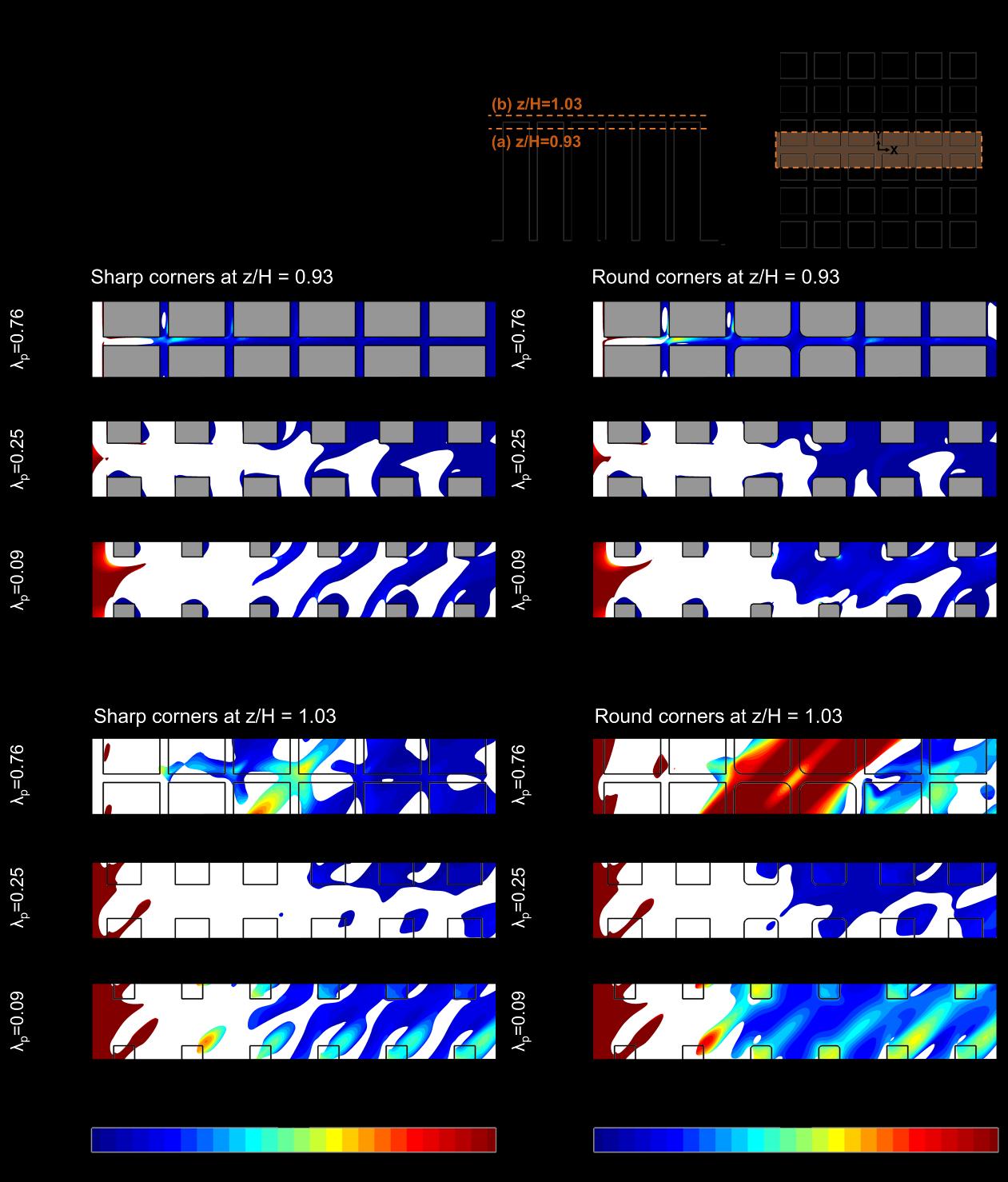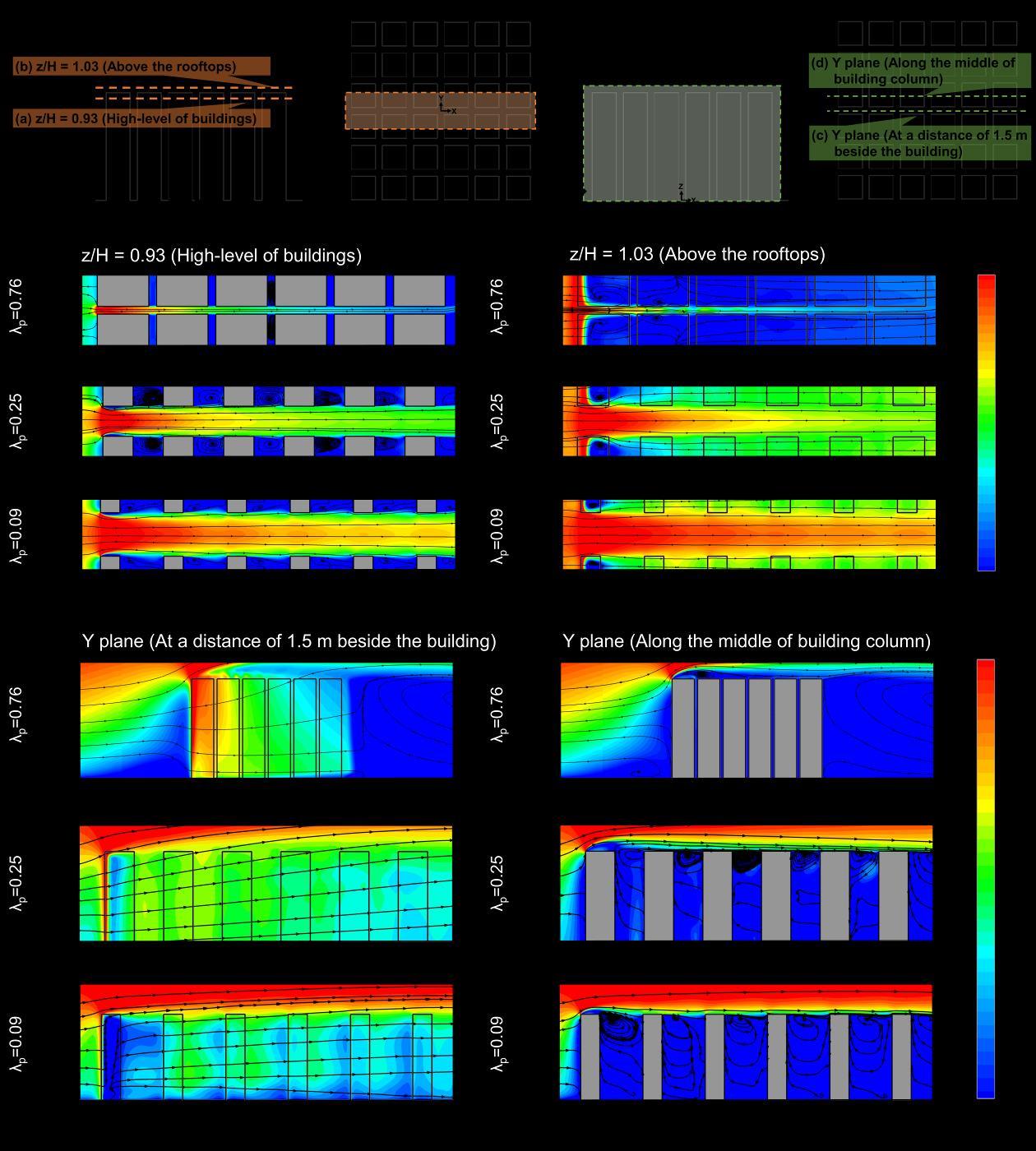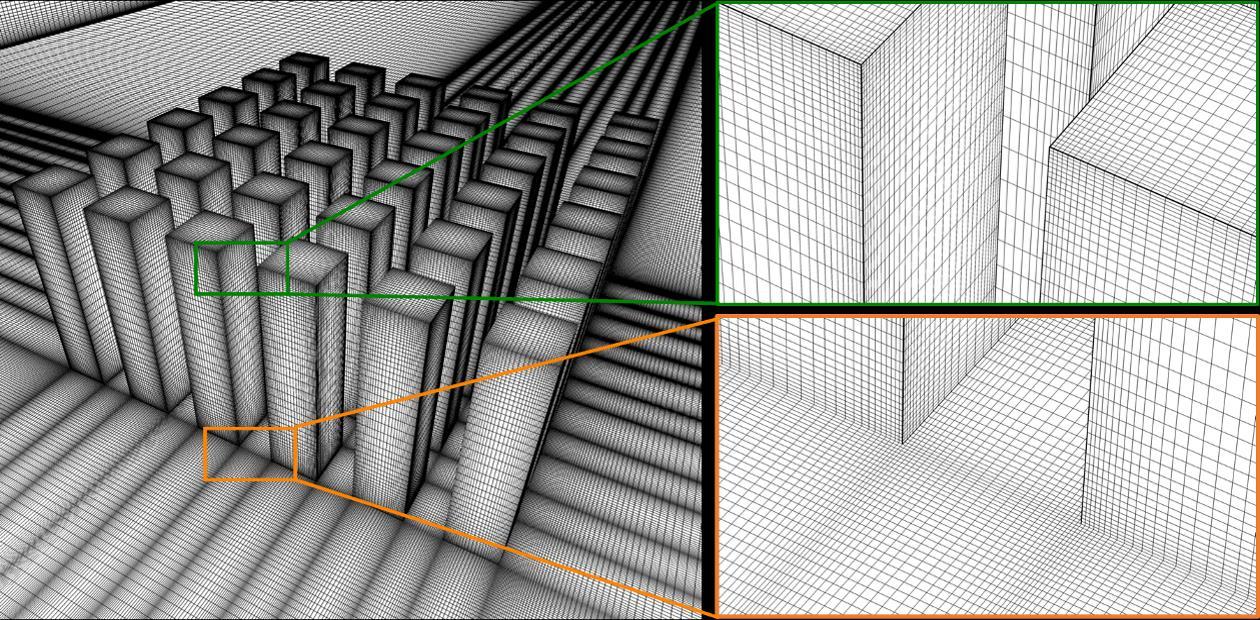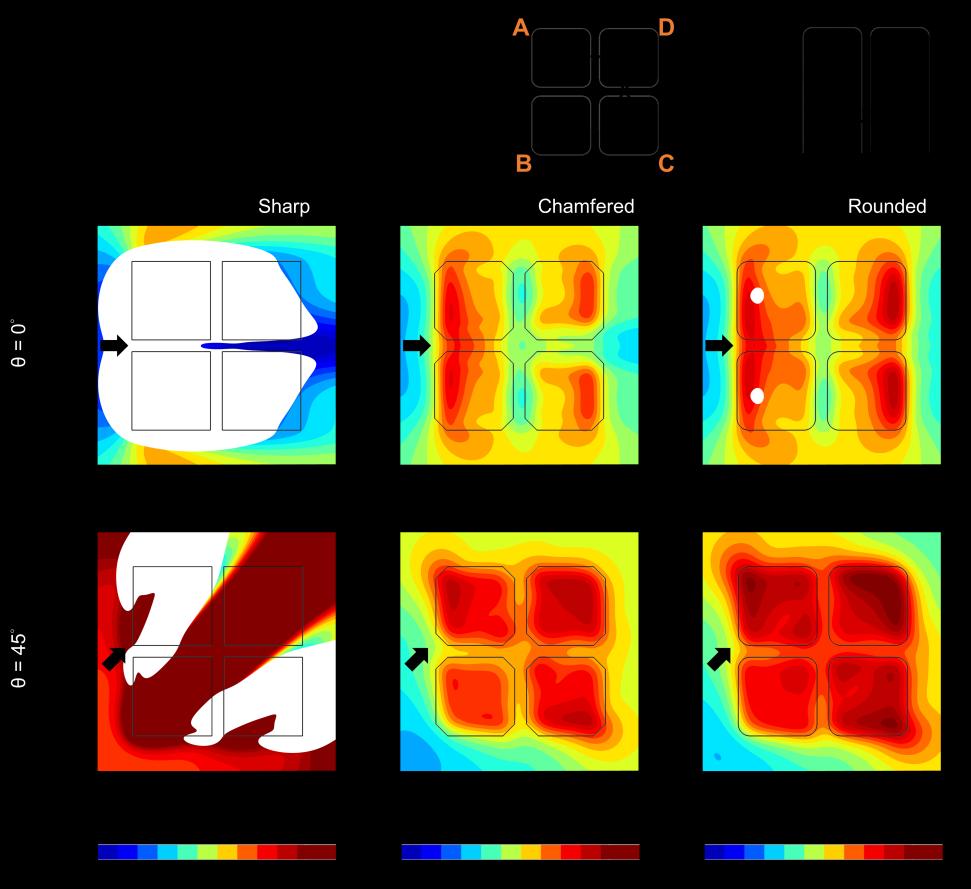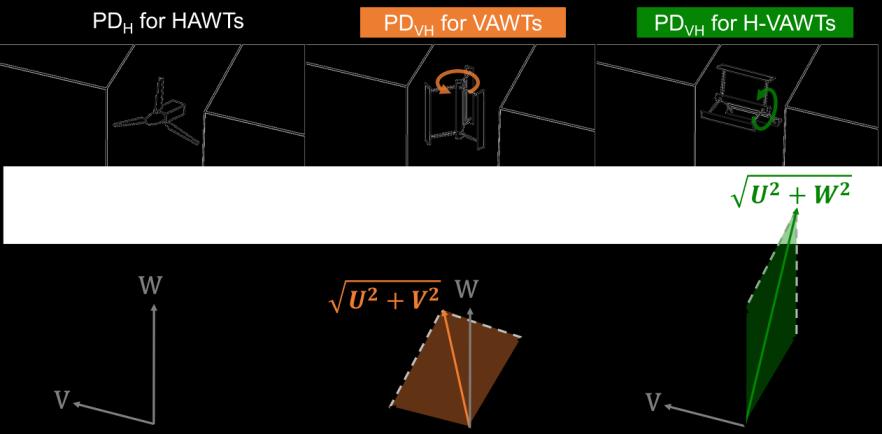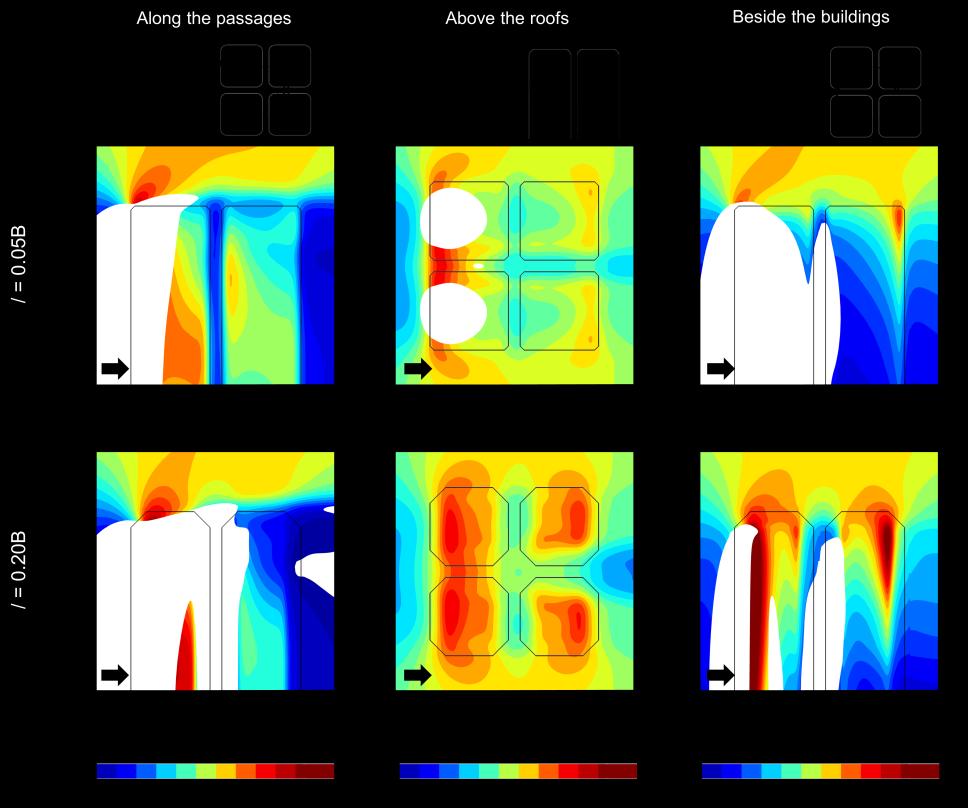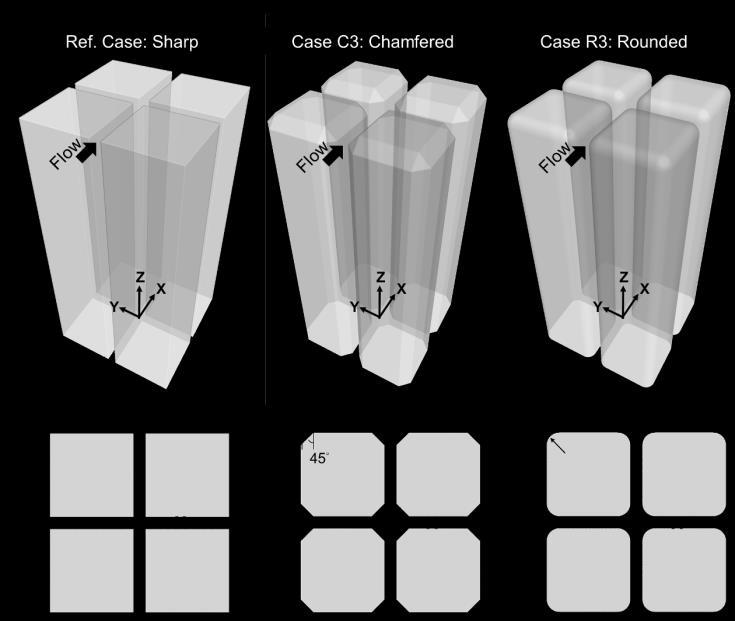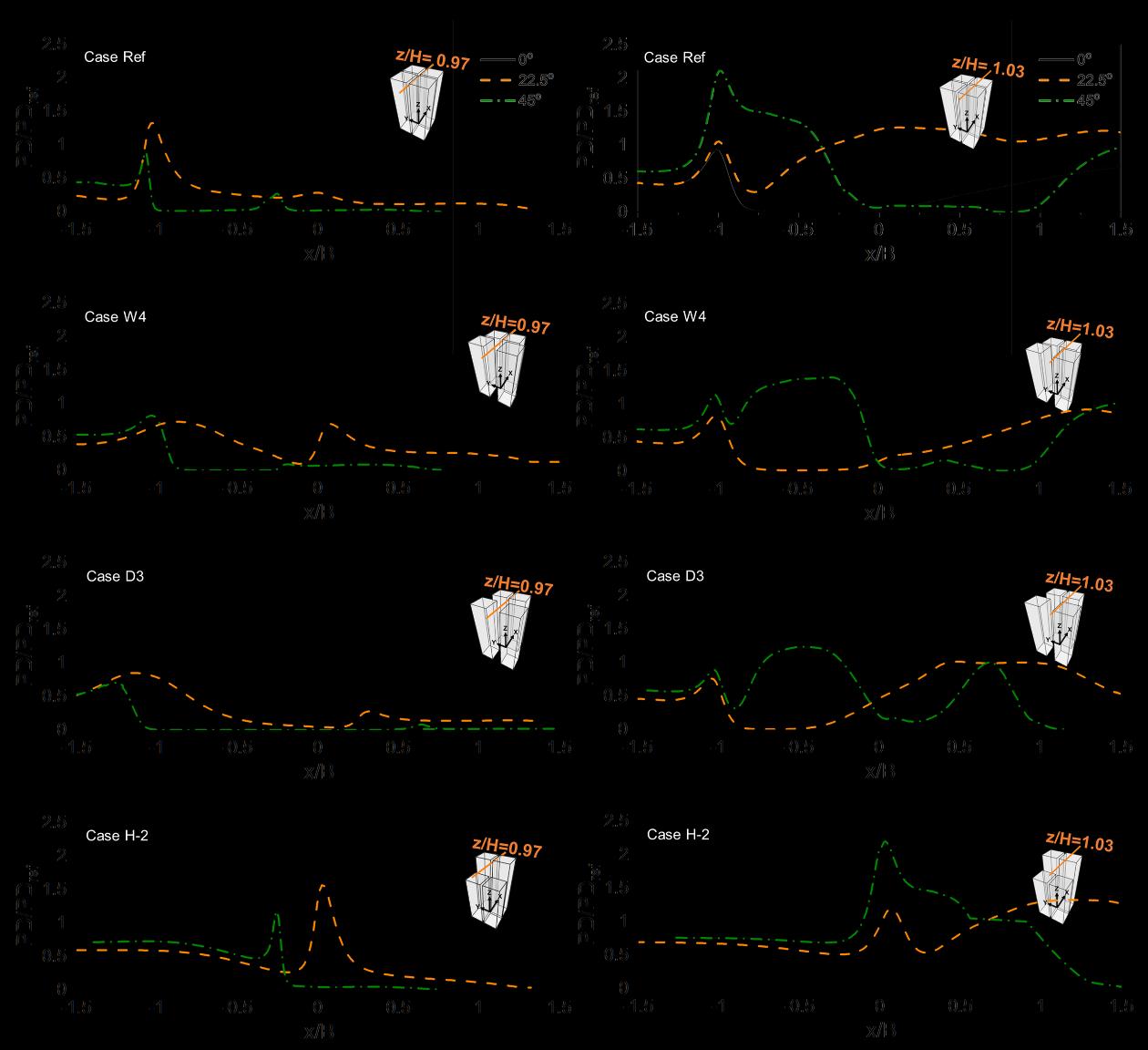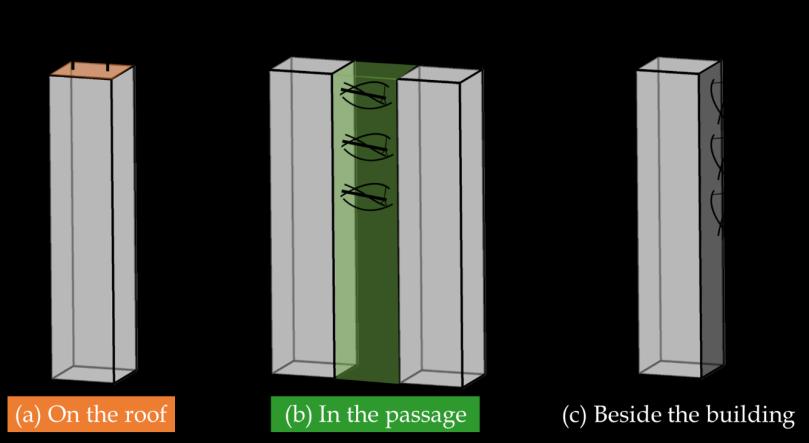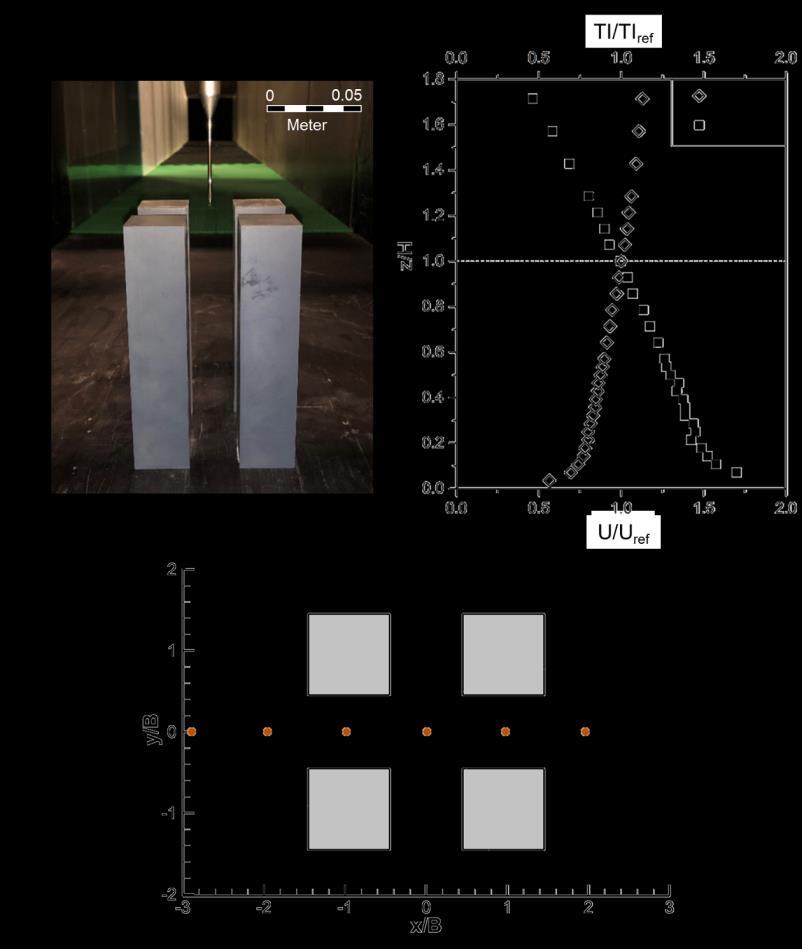Urban wind energy potential: Impacts of building corner modifications Case R4
3.5.4
0.20B
39%
0%
59 22%
Impact of wind turbine type and orientation
The wind power density is typically calculated using only the streamwise velocity component, which is the relevant velocity for the typical HAWTs [103]. Note that the results presented in Secs. 3.5.1-3.5.3 pertain to such a HAWT. However, many studies reported that VAWTs are more suitable for energy harvesting in the urban environment than HAWTs due to their omni-directionality, lower noise production, higher space efficiency and lower installation and maintenance costs [19-21, 129]. Therefore, in this study, the potential for two types of VAWTs is investigated: (i) VAWT; and (ii) H-VAWT, where the latter refers to a VAWT mounted such that its axis is horizontal. The associated wind power densities (PD) are, therefore, calculated based on the velocities for each type of turbine in Fig. 3.13 as follows: a) b) c)
PDH for HAWTs: Only the streamwise velocity component (U) is used to calculate PD. PDVV for VAWTs: The vector sum of the streamwise and lateral velocity (V) components is used to calculate PD. PDVH for H-VAWTs: The vector sum of the streamwise and vertical velocity (W) components is used to calculate PD.
Figure 3.13. Three different wind turbine type/orientation for wind energy harvesting in the building passage.
Figure 3.14 presents the profiles of the dimensionless power density (a) along the passage at y/B = 0 (midplane) and z/H = 0.93, (b) just above the roof at y/B = 0.5 and z/H = 1.03 and (c) beside the buildings at y/B = 1.1 and z/H = 0.93 for the three types of wind turbines. In line with the observations discussed in Section 3.5.1, Fig. 3.14 also shows that the PD for the chamfered and the rounded corner shapes are substantially higher than those of the sharp corner along the three lines. Therefore, the discussion on the different turbine types is focused on the chamfered and the rounded corner shapes due to their comparatively high PD.


